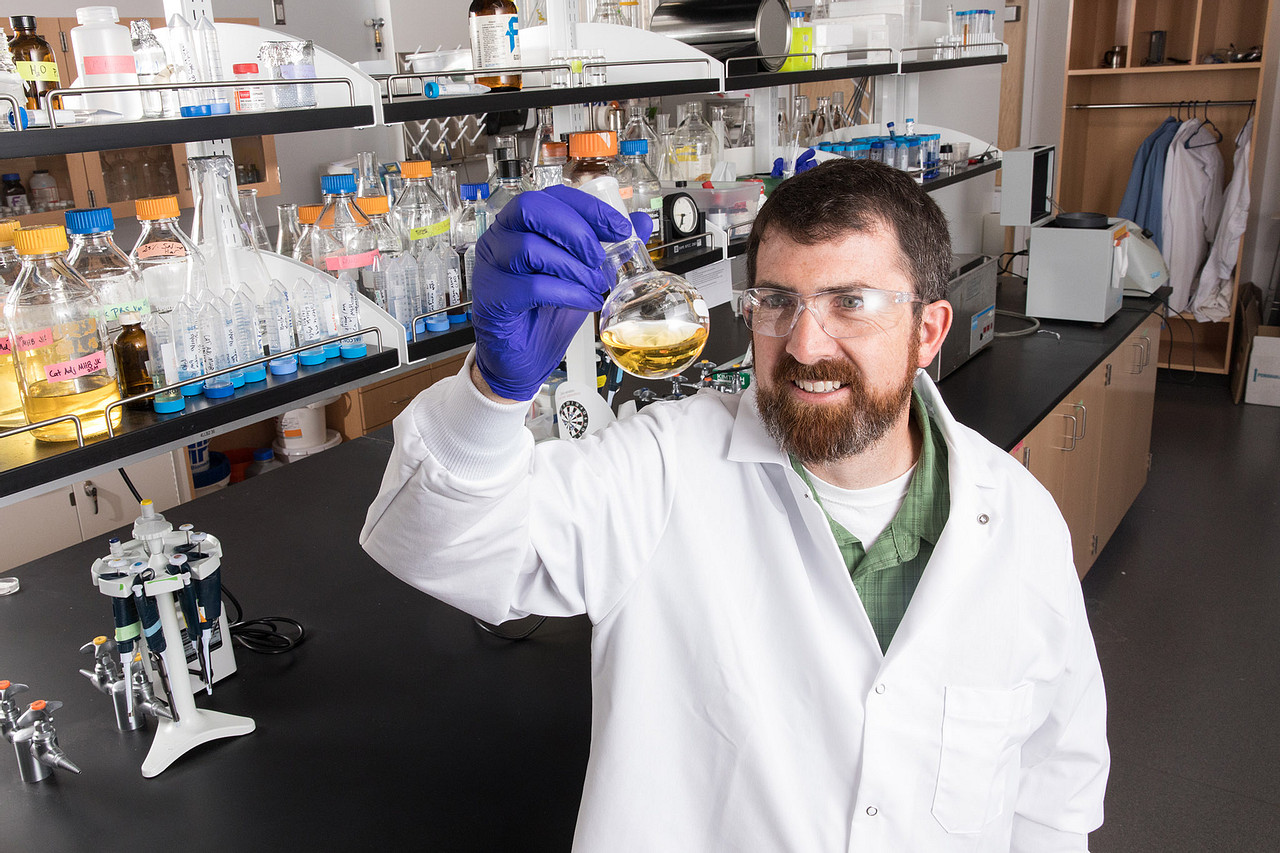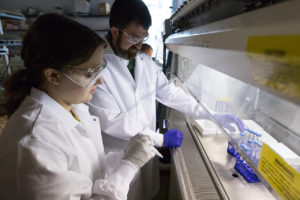
When Andy Koppisch arrived at Colorado State University in the fall of 1992, he didn’t realize that he would find his passion in chemistry. Originally a chemical engineering major, Koppisch quickly realized his fascination with chemistry after just one class.
“I had a chemistry class that really resonated with me, Organic Chemistry I,” said Koppisch. “It was a big change to switch majors, but chemistry was just a perfect match for me, I really enjoyed that my chemistry classes at CSU were very personal and that I was able to get to know a lot of the professors. Looking back now, I can’t believe that I had an opportunity like this to learn directly from world-recognized experts in the field.”
This experience was unique to CSU, Koppsich said, noting that most undergraduate chemistry programs do not offer such a personalized approach with small classes and field-recognized professors teaching undergraduate courses.
Koppisch, who is now the interim Associate Vice President for Research and an associate professor of chemistry at Northern Arizona University, credits much of his success to the scholarships and awards that he received as an undergraduate student at CSU.
“I received a scholarship coming into CSU that went a long way to help with bills,” said Koppisch. “After some time in the program, the chemistry department gave out awards that would go to deferring additional expenses. I appreciated those even more because they came from people that knew me. These recognitions are the types of things that can go on a resume and help open a door and connect students to future opportunities.”
As a professor himself, Koppisch sees the importance of scholarships and awards that his students receive.
A career in chemistry
 “I really enjoy diving deeply into the subject,” said Koppisch. “My chemistry instructors ensured that I appreciated that the process of science is trying to understand things and not just reciting facts that they mentioned in class. That really set me up for my career and helped me develop independence.”
“I really enjoy diving deeply into the subject,” said Koppisch. “My chemistry instructors ensured that I appreciated that the process of science is trying to understand things and not just reciting facts that they mentioned in class. That really set me up for my career and helped me develop independence.”
Koppisch’s education at CSU included important service learning opportunities through the Chemistry Club.
“The club would go to elementary schools and give presentations to the students,” said Koppisch. “This was my first exposure of explaining things to an audience that didn’t have the same level of understanding as I did. I have carried that with me. The lessons that I learned from my CSU professors to explain these complex topics have stayed with me throughout my career and have been instrumental to me as a professor of chemistry.”
After graduating with a bachelor’s of science degree in chemistry, Koppsich went on to earn a Ph.D. in chemistry at the University of Utah, worked as a postdoctoral researcher at Stanford University and Los Alamos National Laboratory, then held a position as a staff scientist at Los Alamos before landing in his current role at Northern Arizona. His current research focuses on how ionic liquids can be used in antibiotic and antiseptic materials.
“Research is about discovering new knowledge and communicating it,” he said “No one in research is testing you to see if you know the ‘right answer.’ You are pursuing new knowledge and having to defend your work.”
Koppisch credits his small undergraduate chemistry classes and the rigorous guidance of his professors at CSU for helping him build the foundation of knowledge that he has used throughout his career.
“Chemistry classes at CSU taught me to have the intellectual maturity required as a professional in the field, and to be an effective educator for the next generation of students,” he said “They helped me to understand science in a way that makes sense to me and gave me the ability to communicate that material to others who don’t yet have the same understanding.”